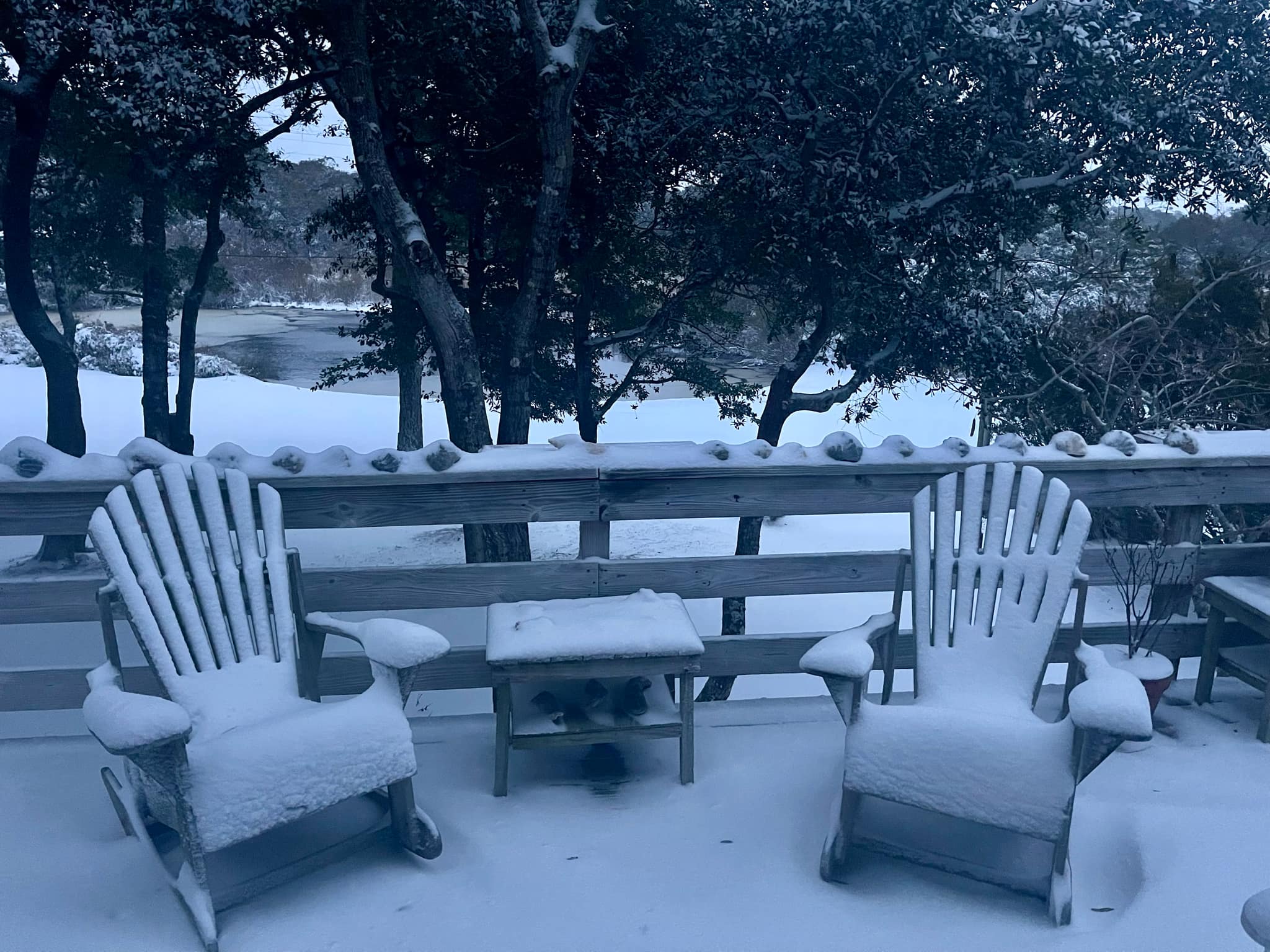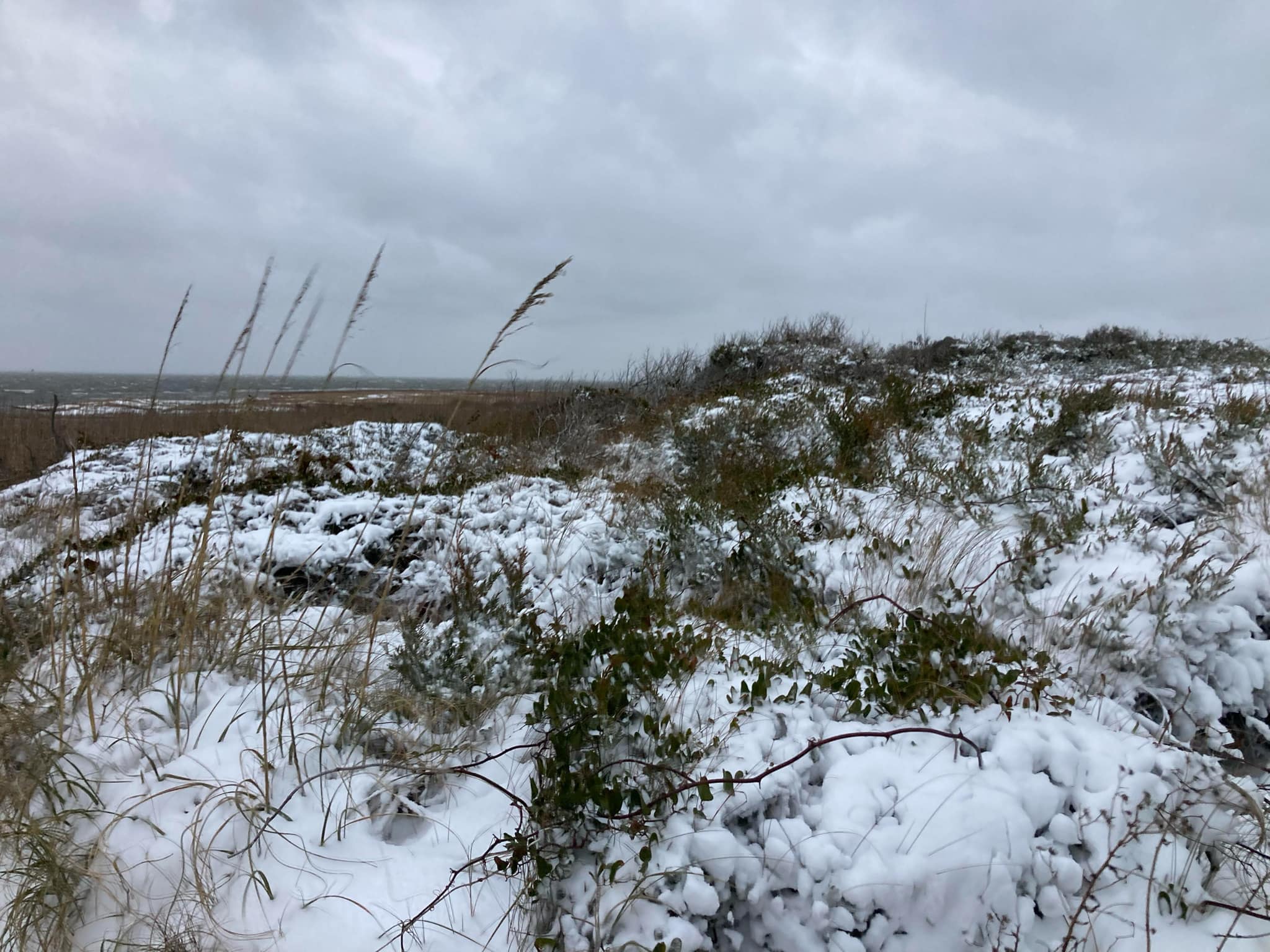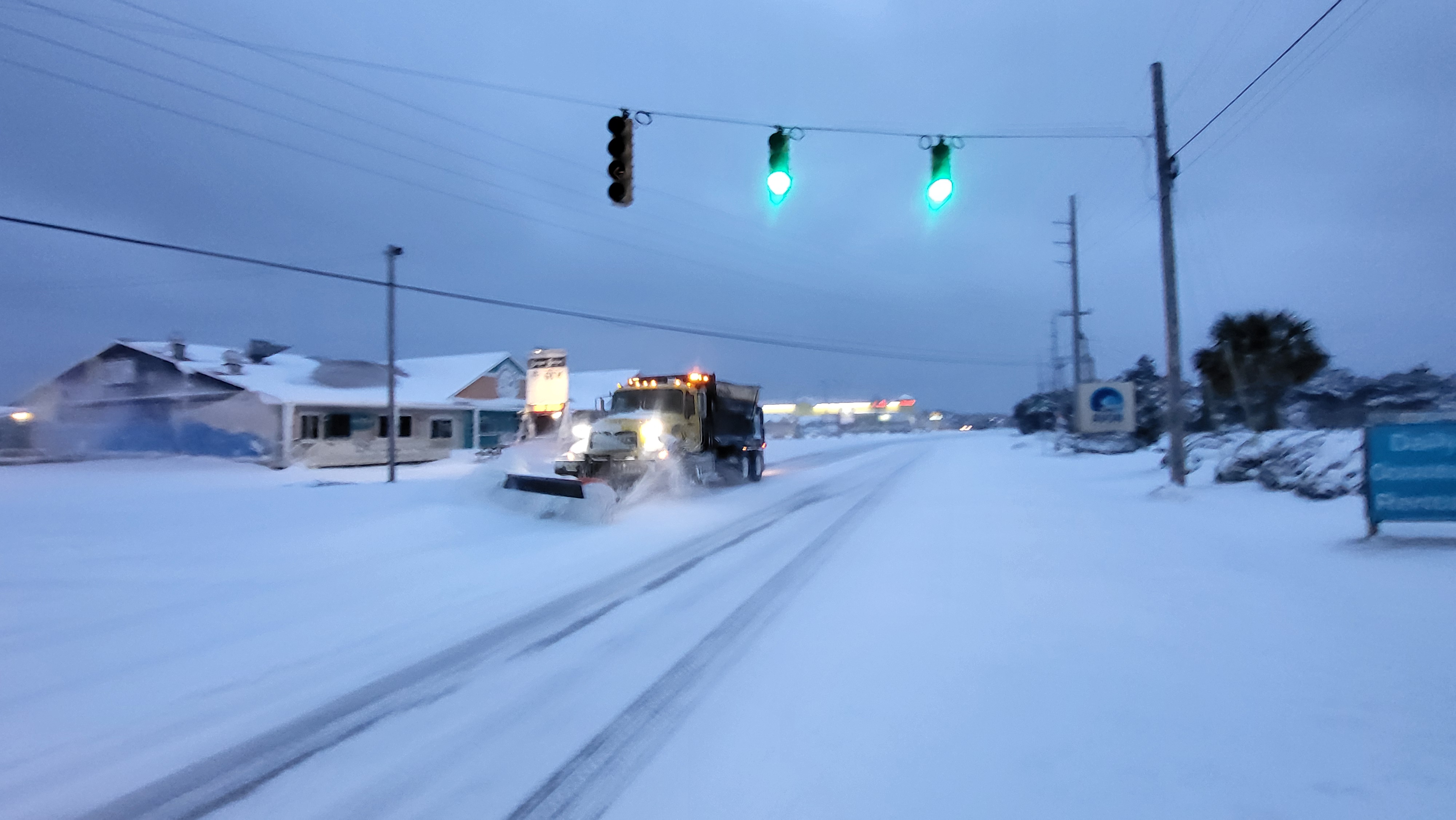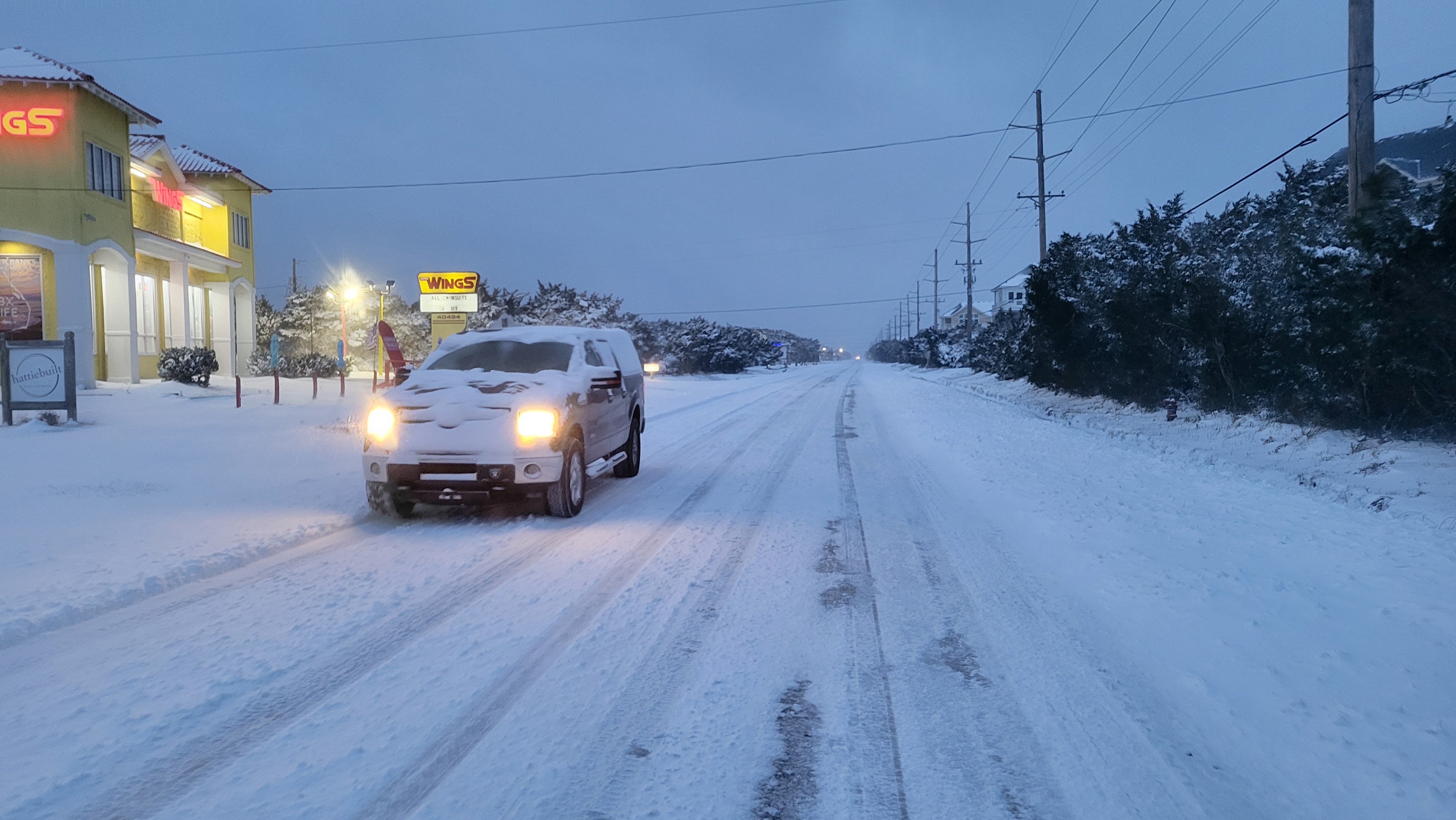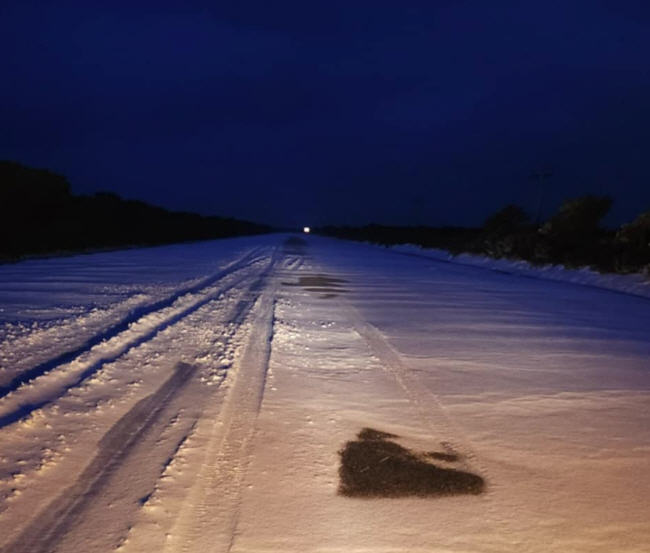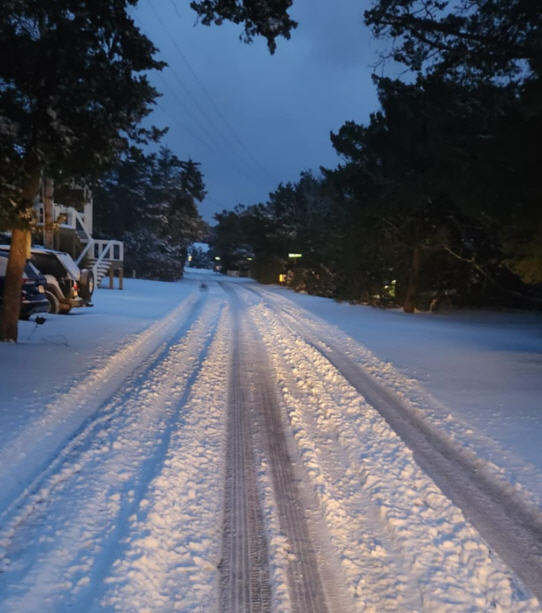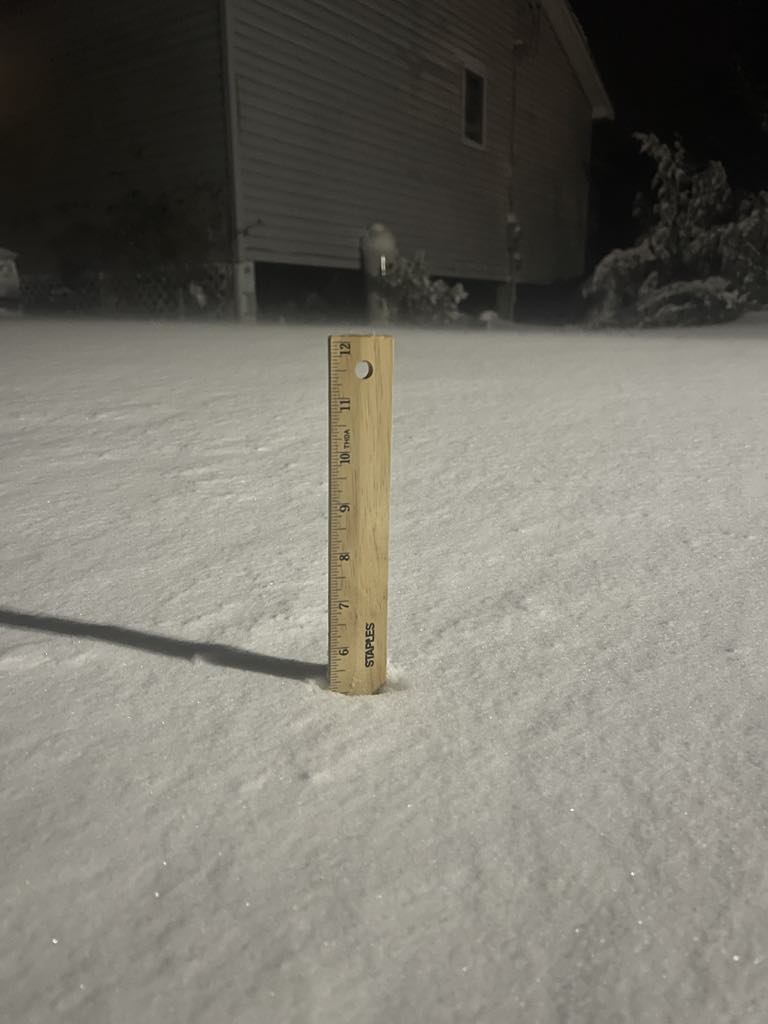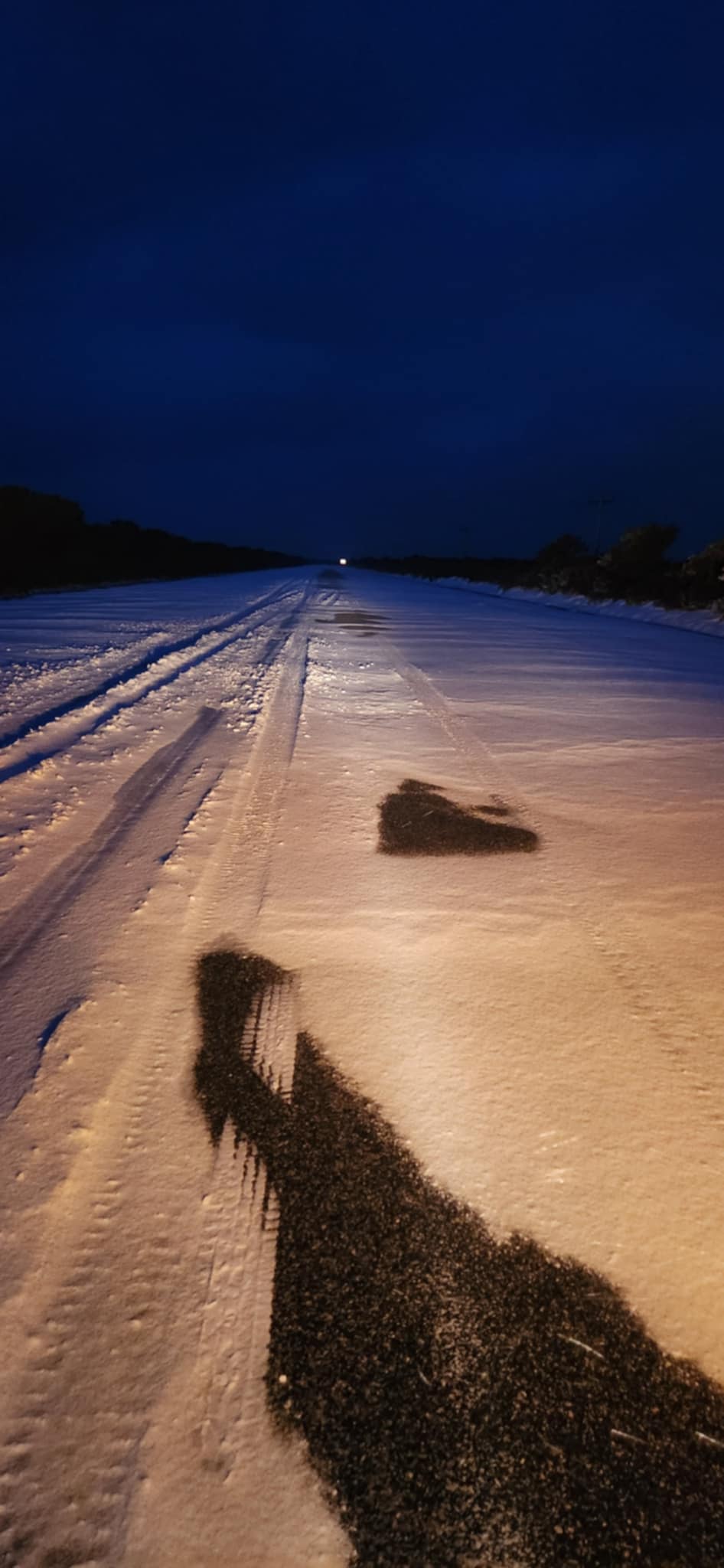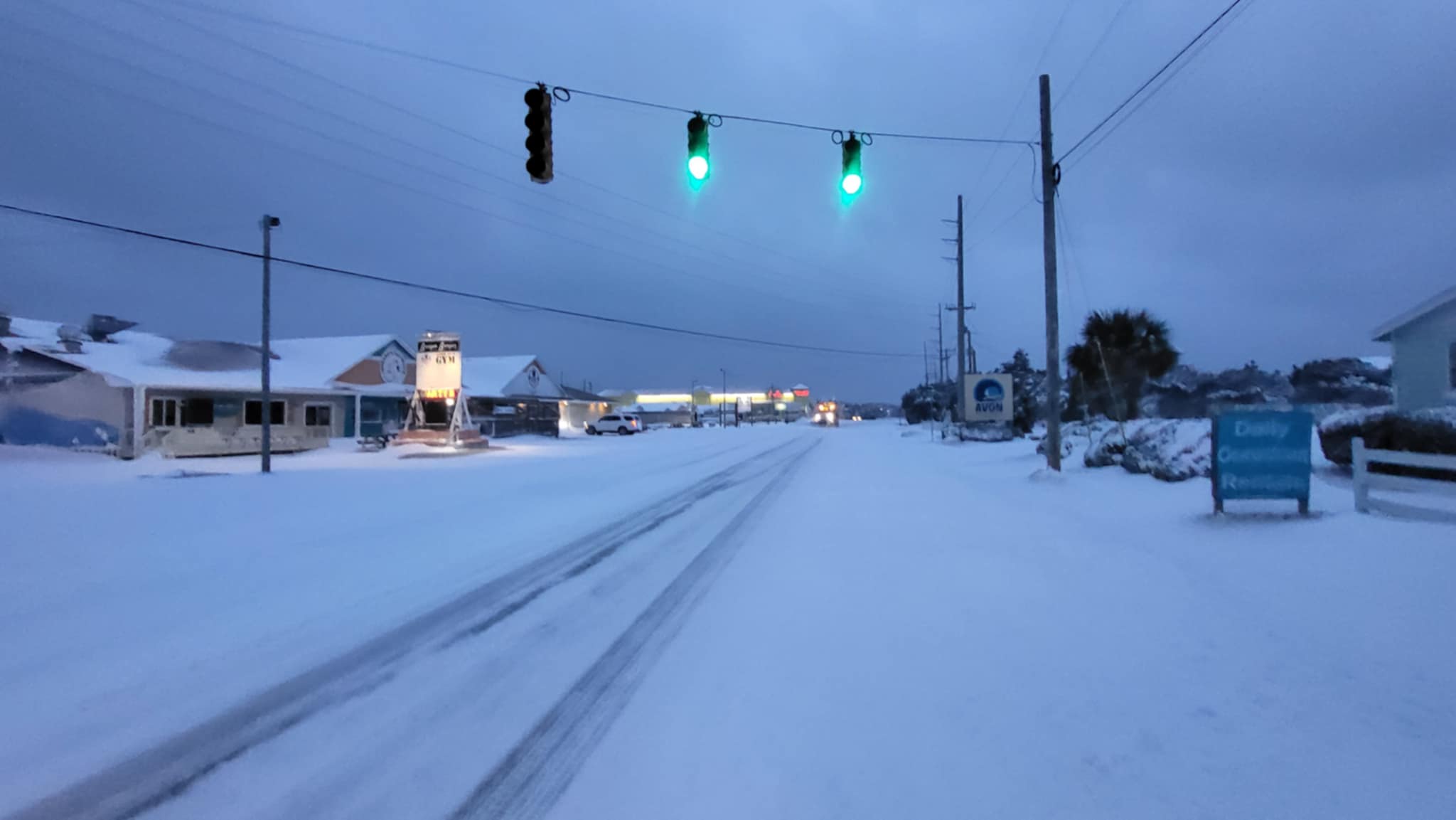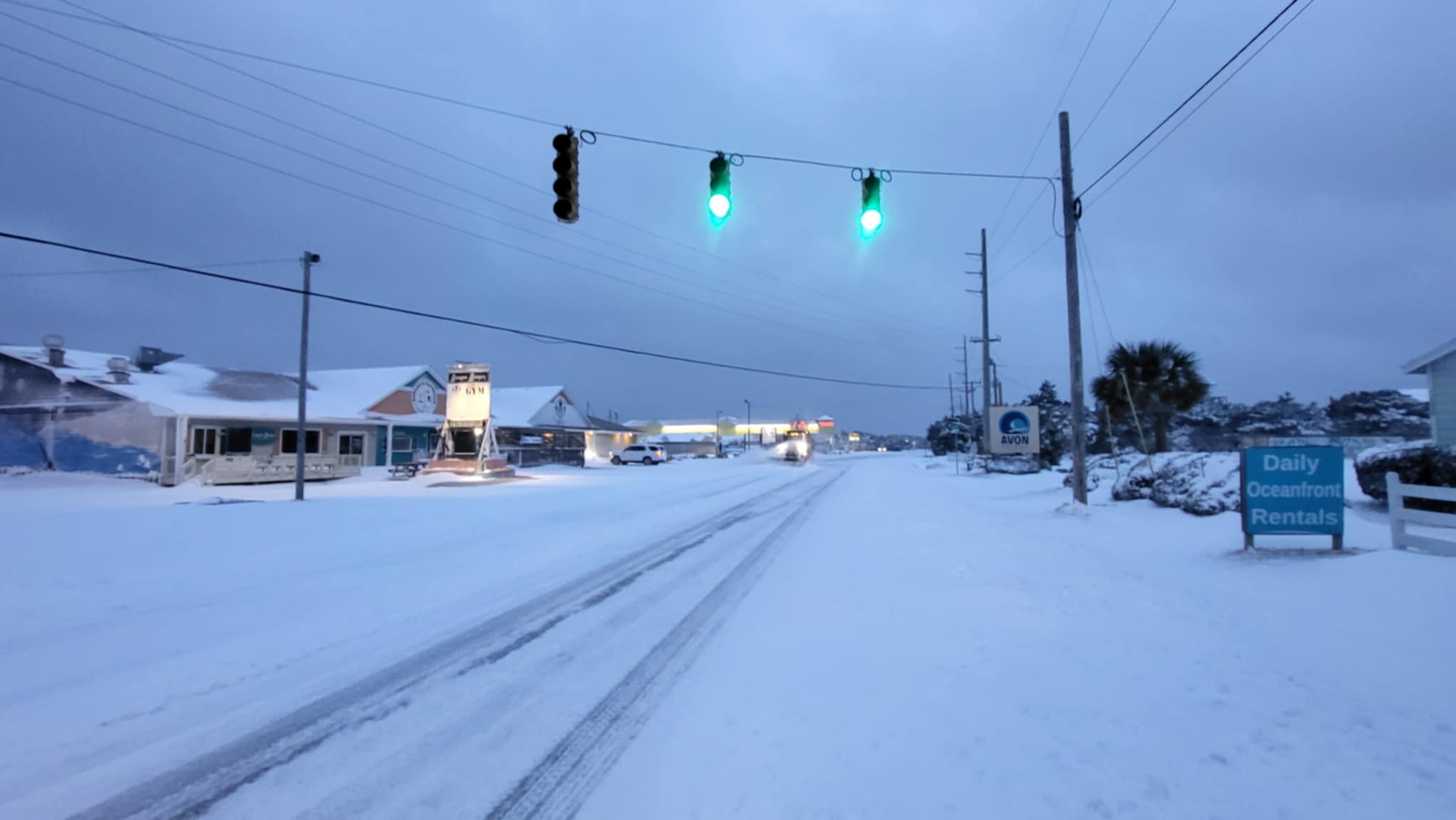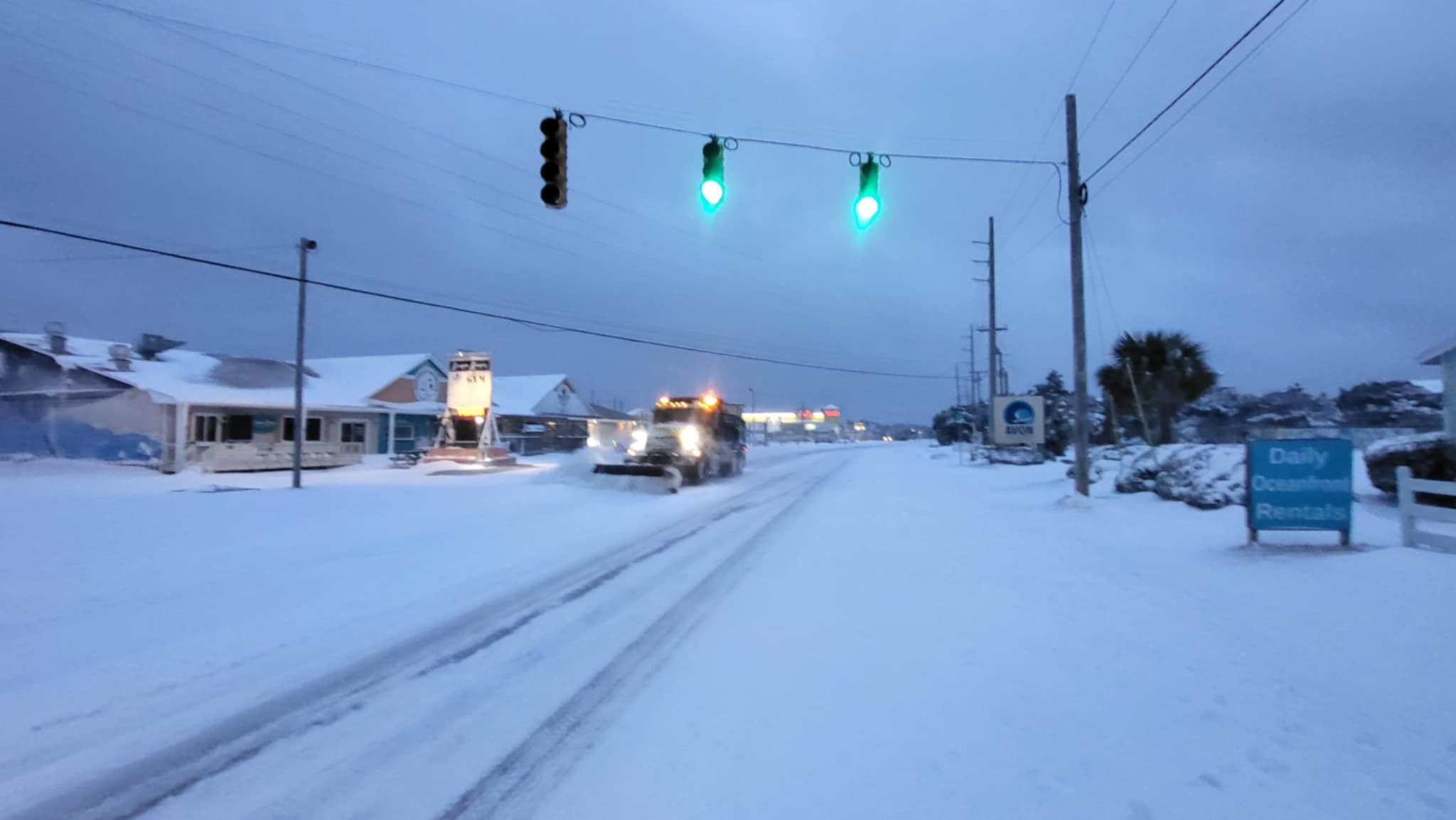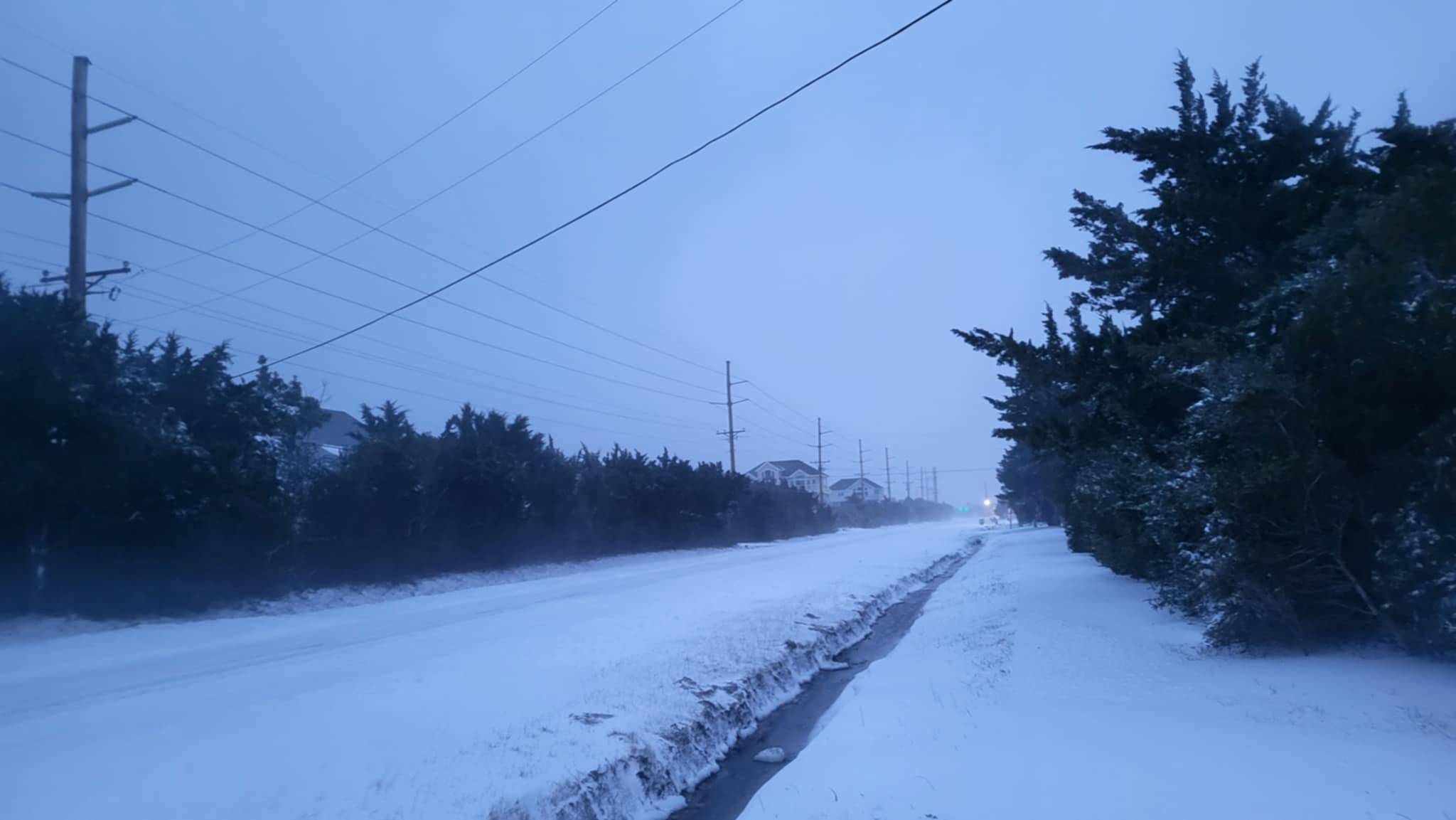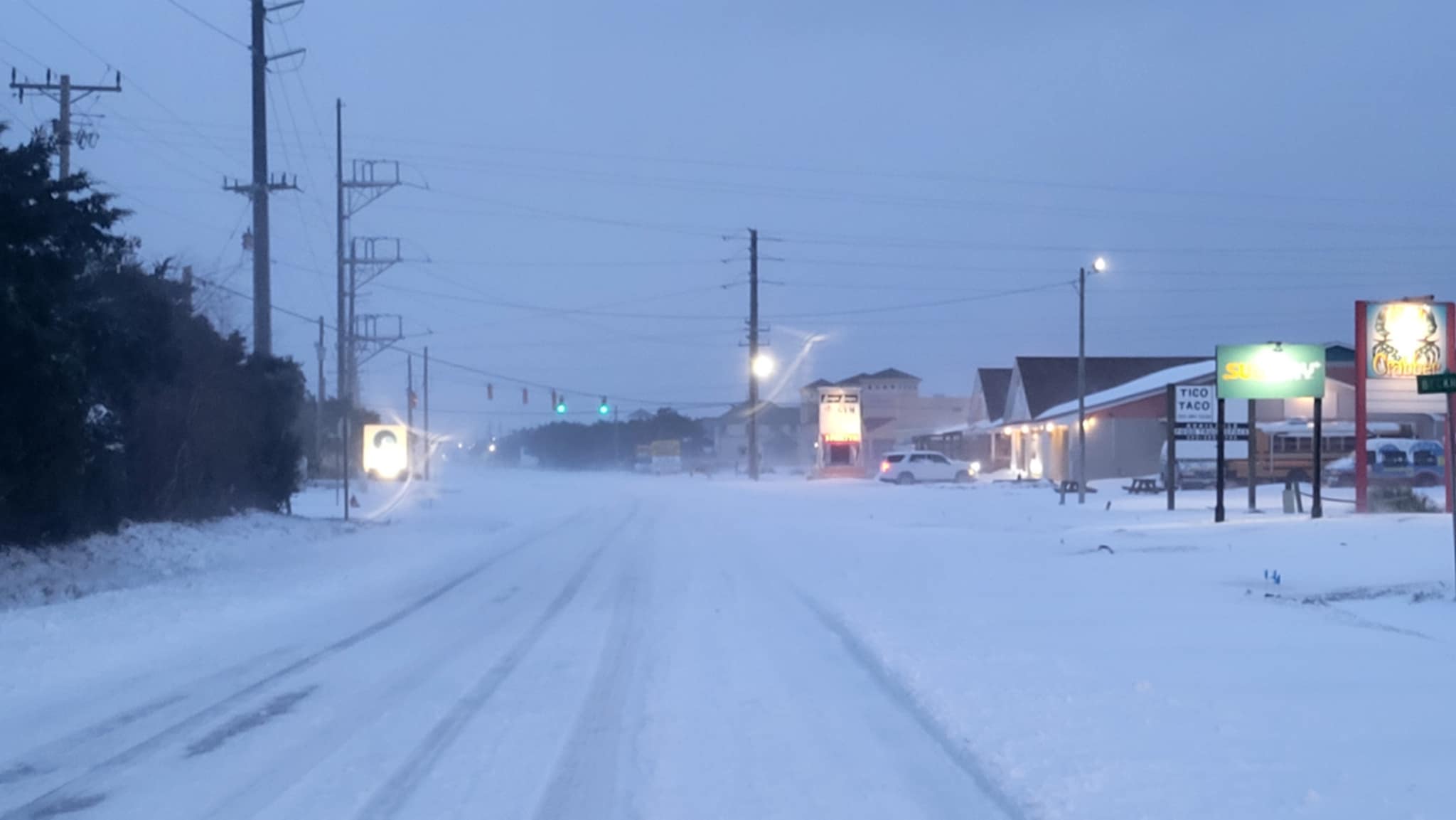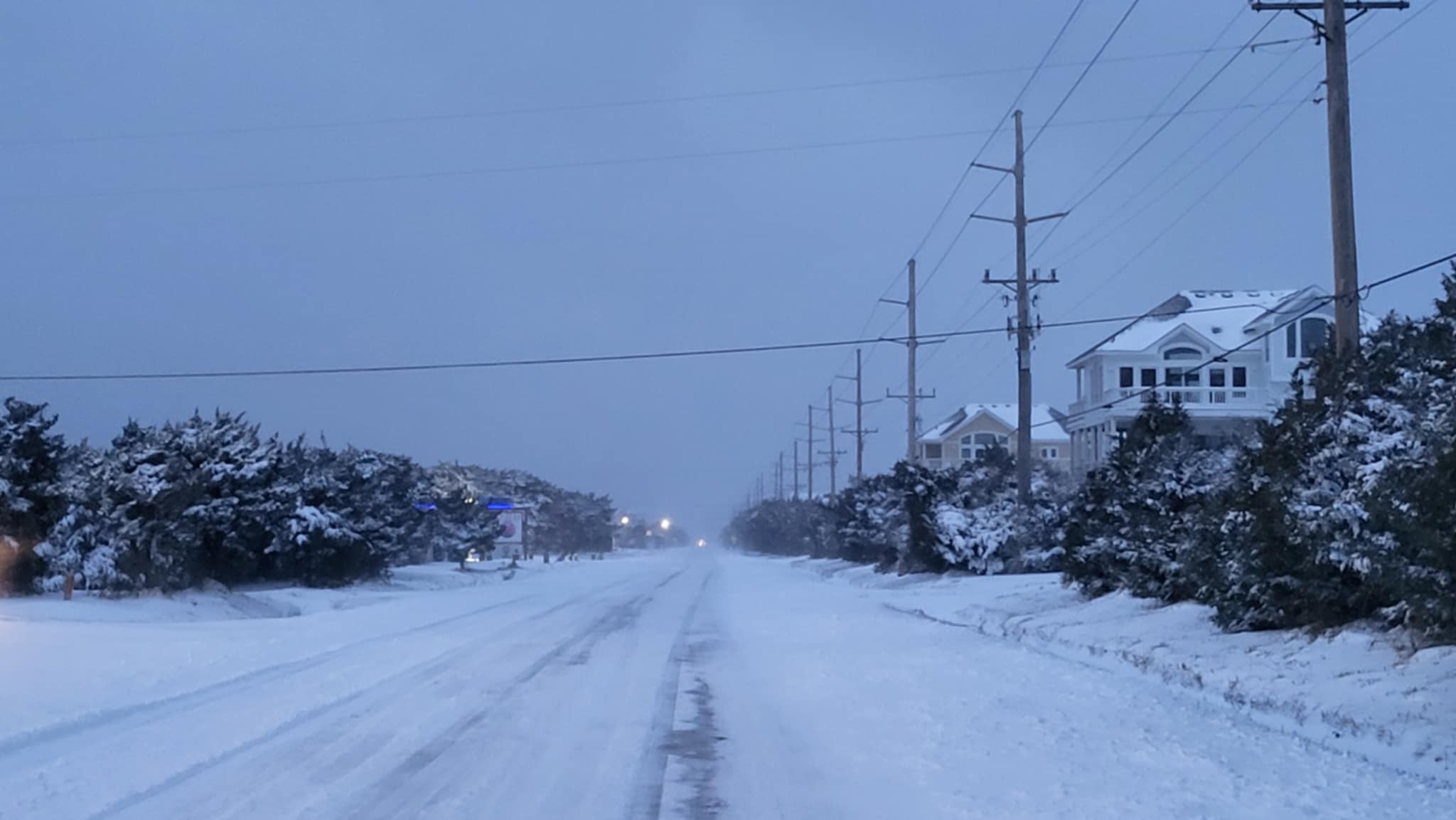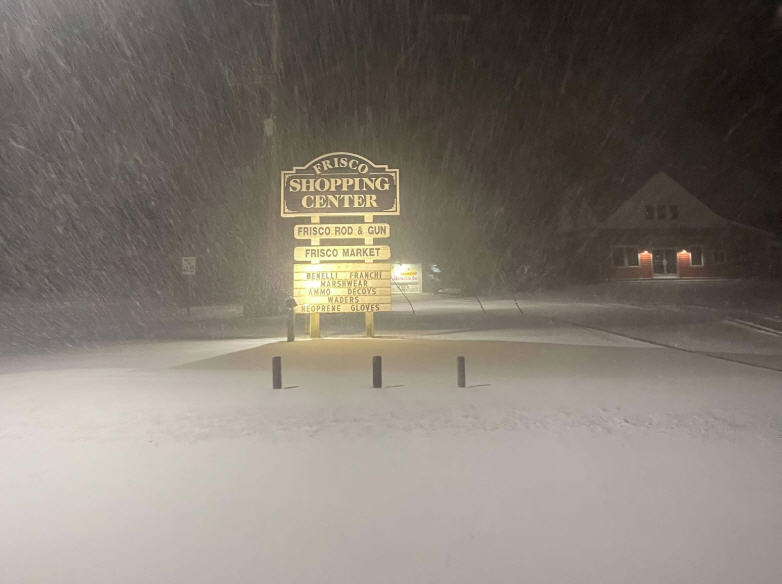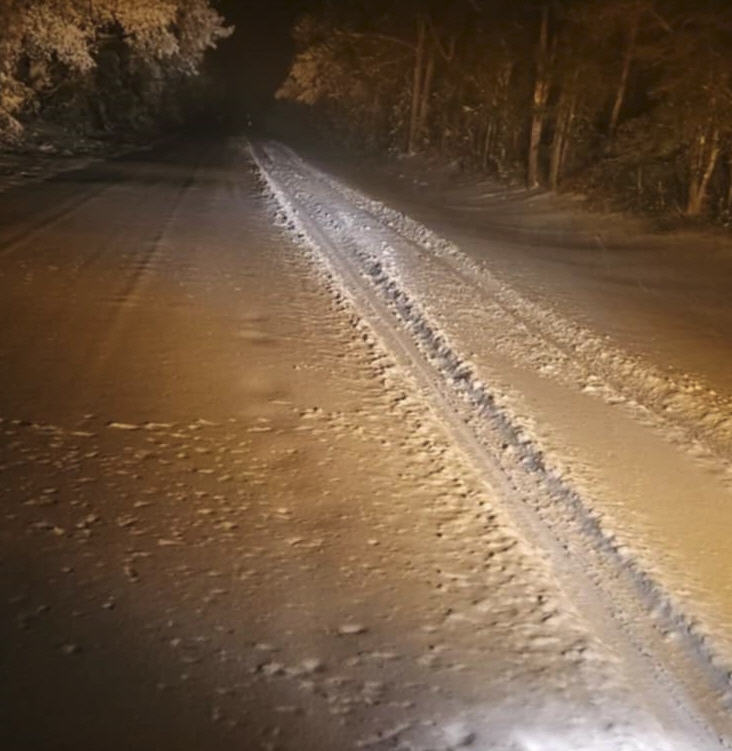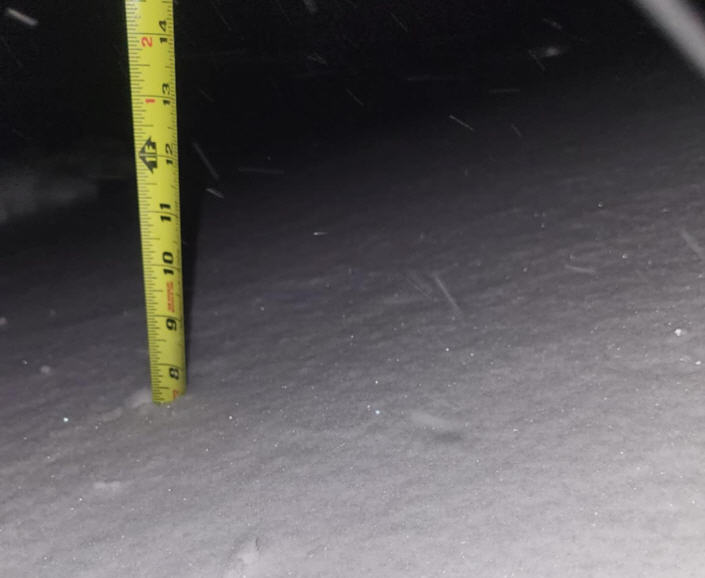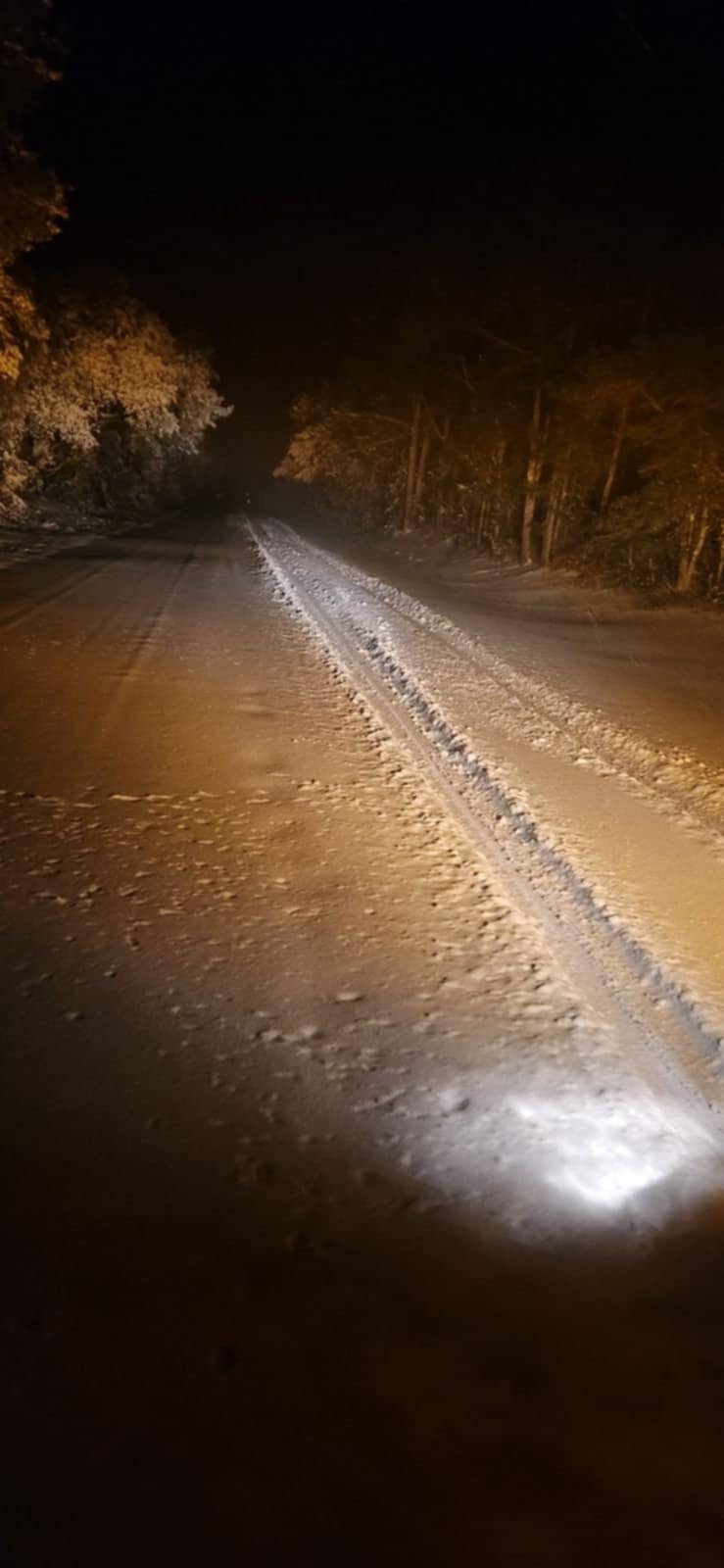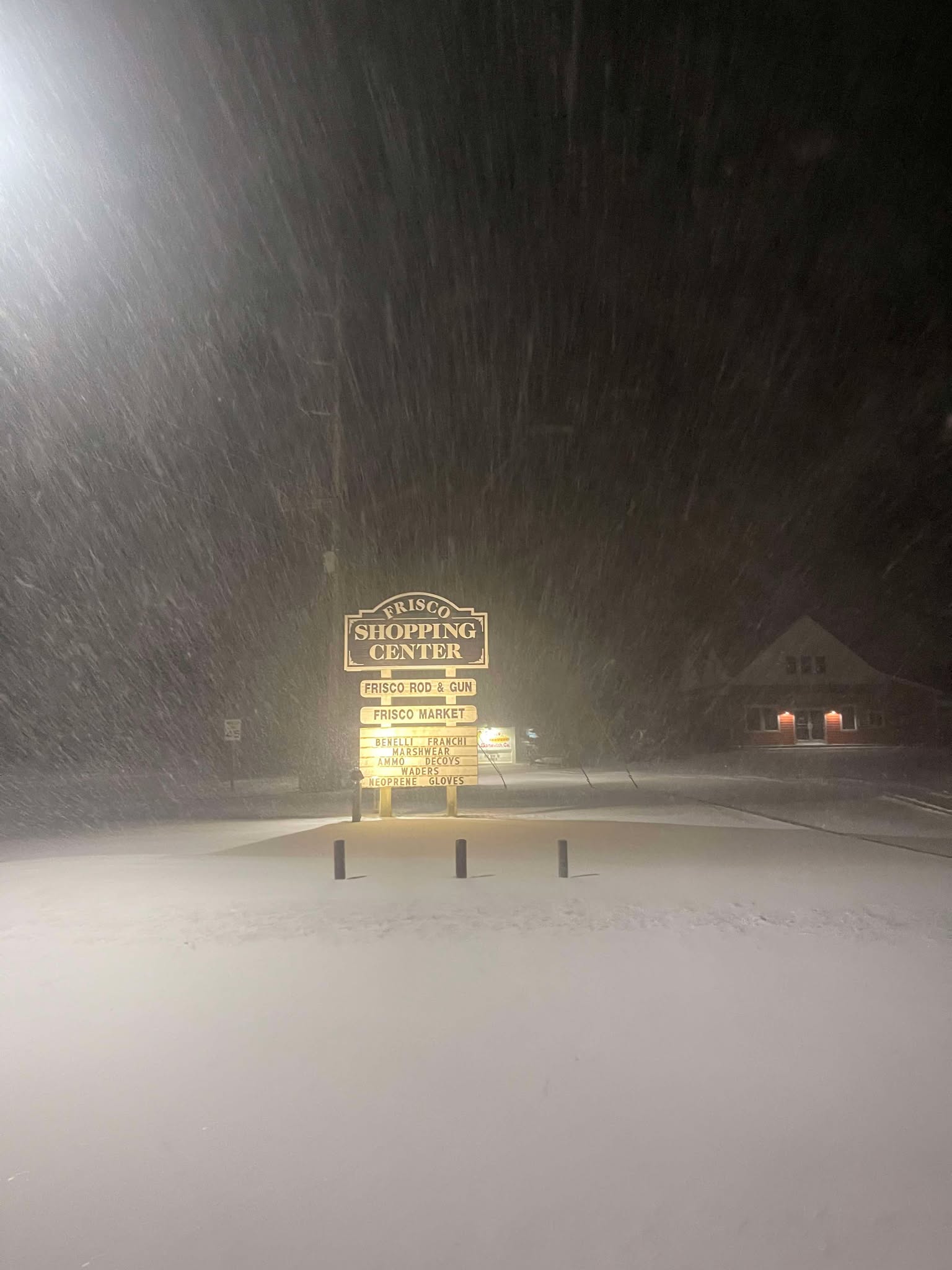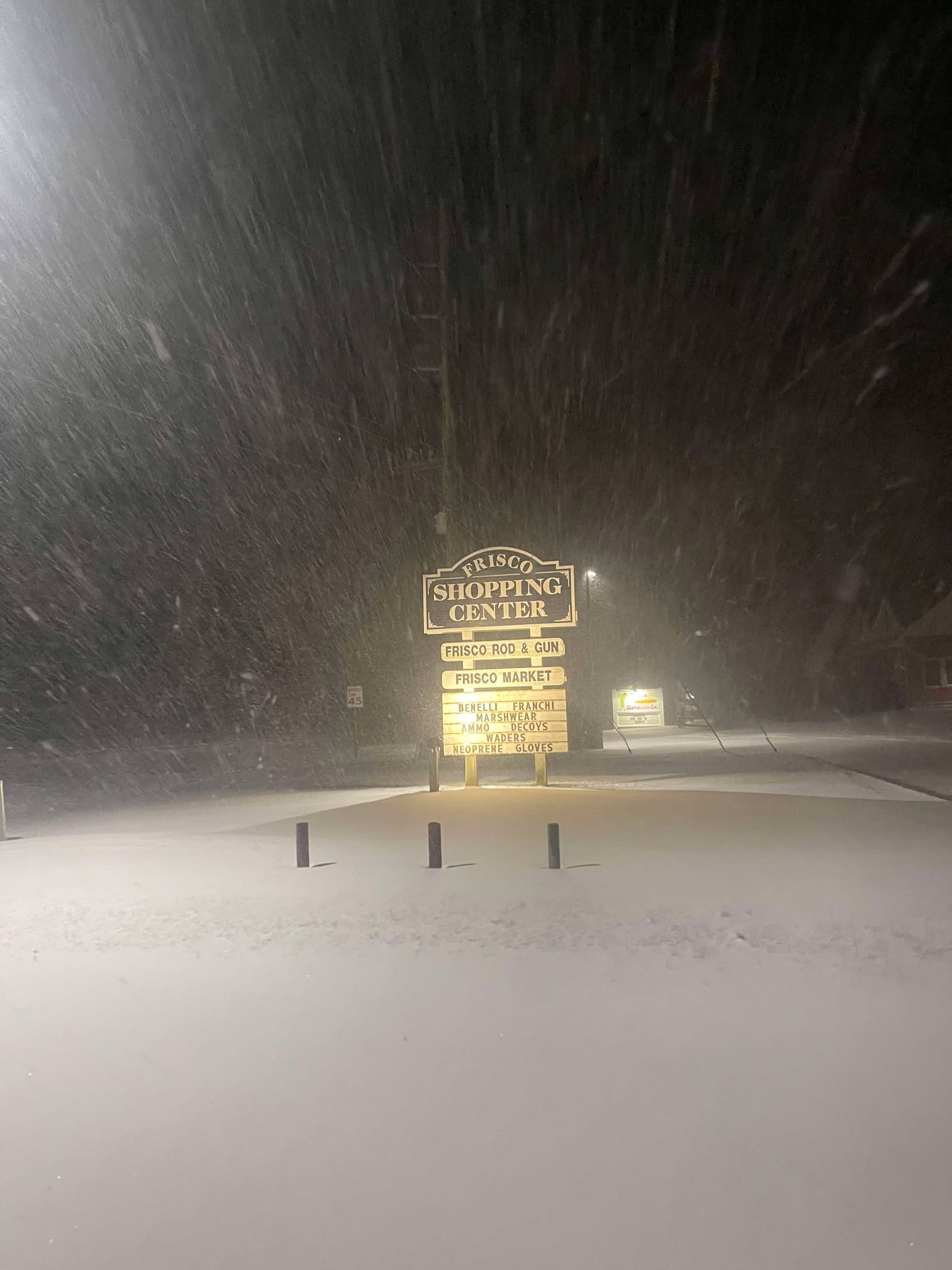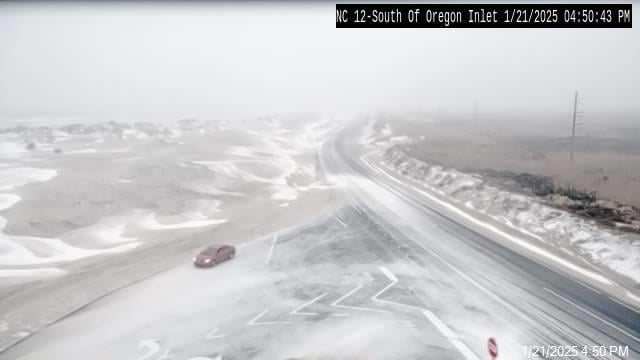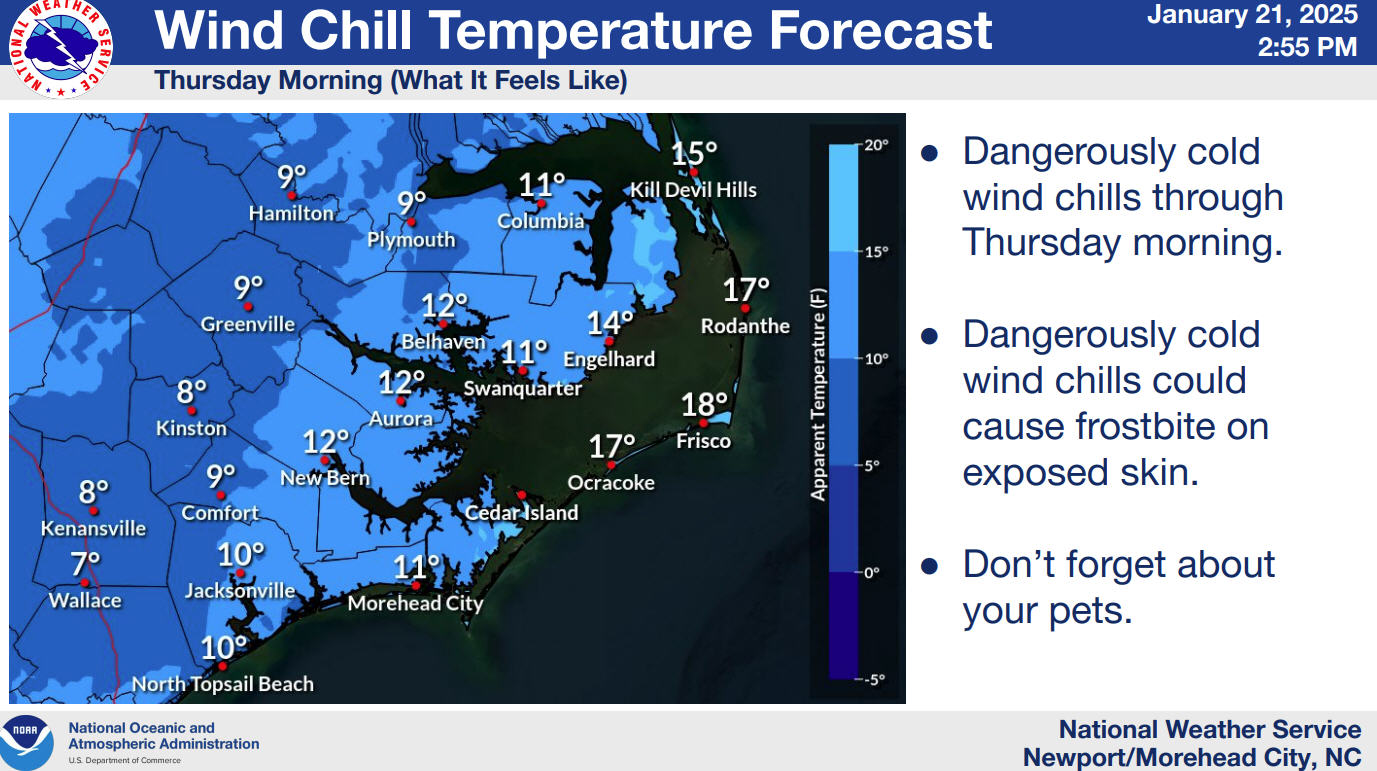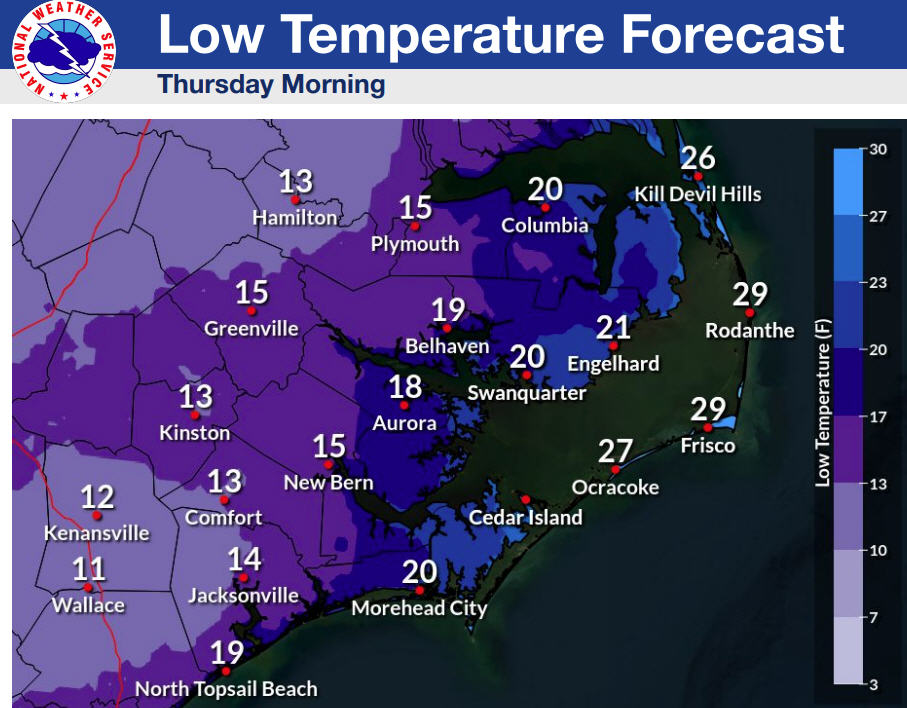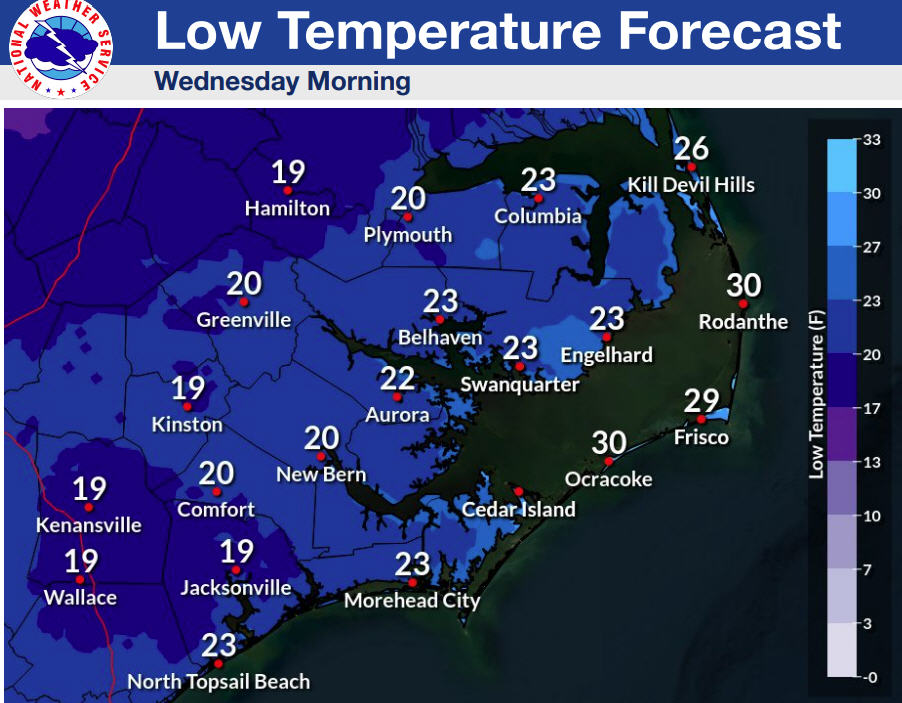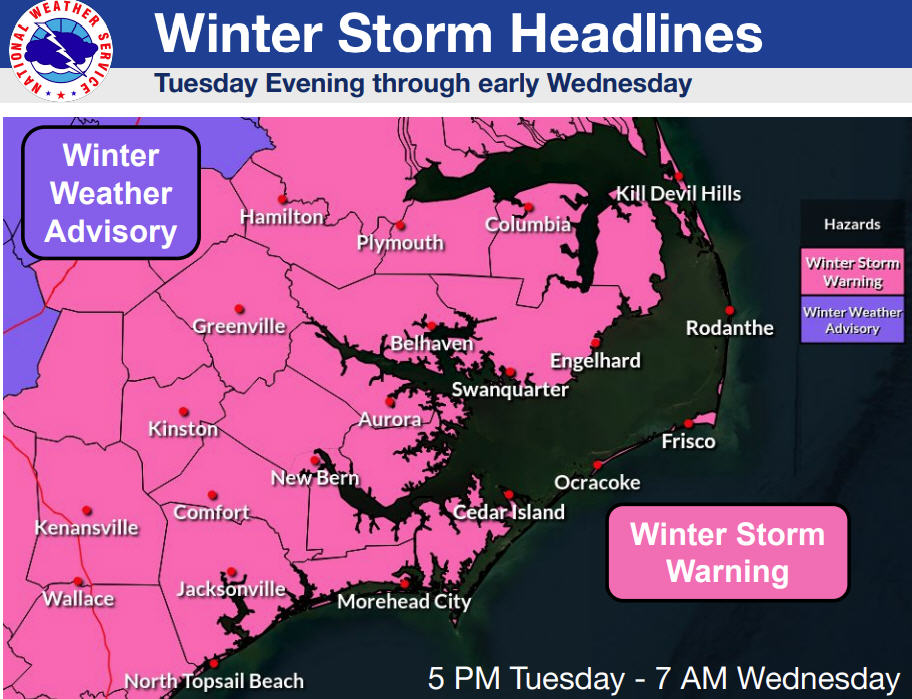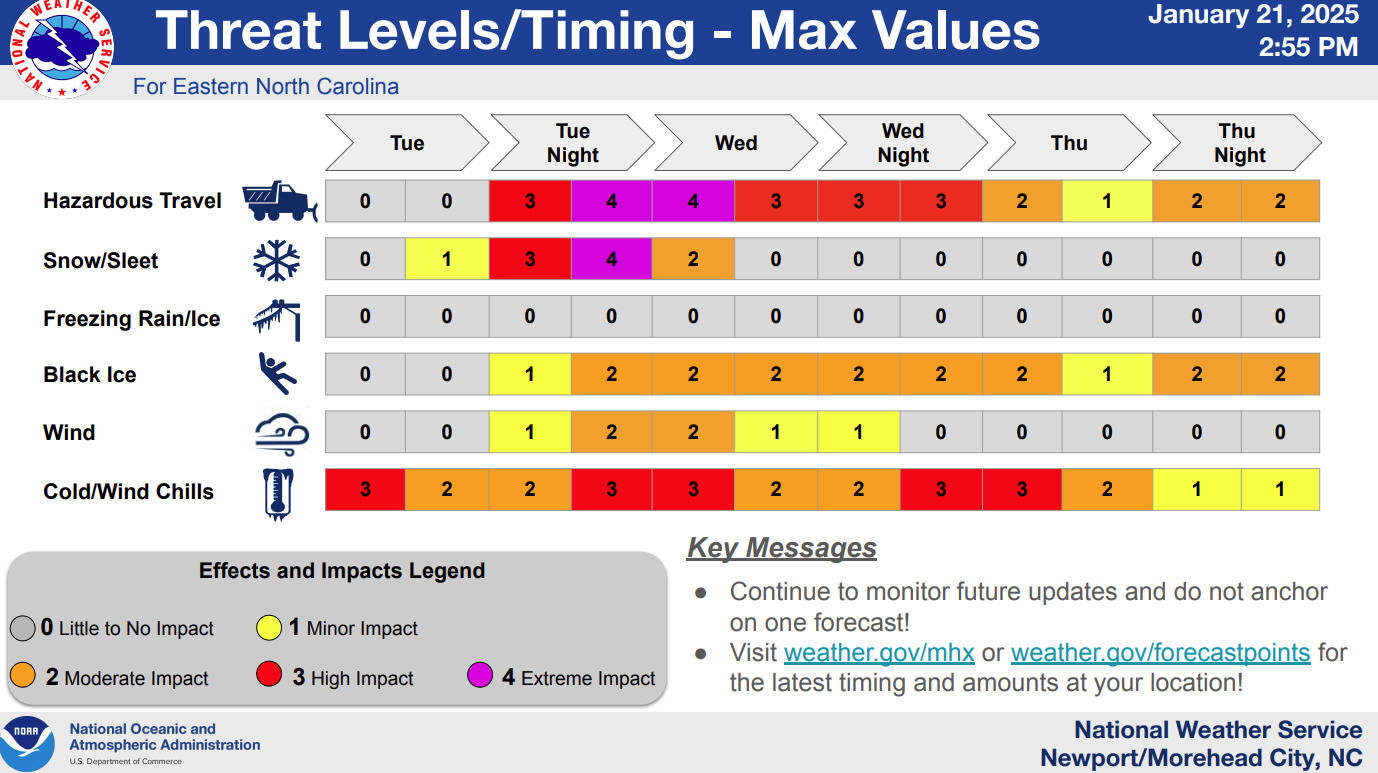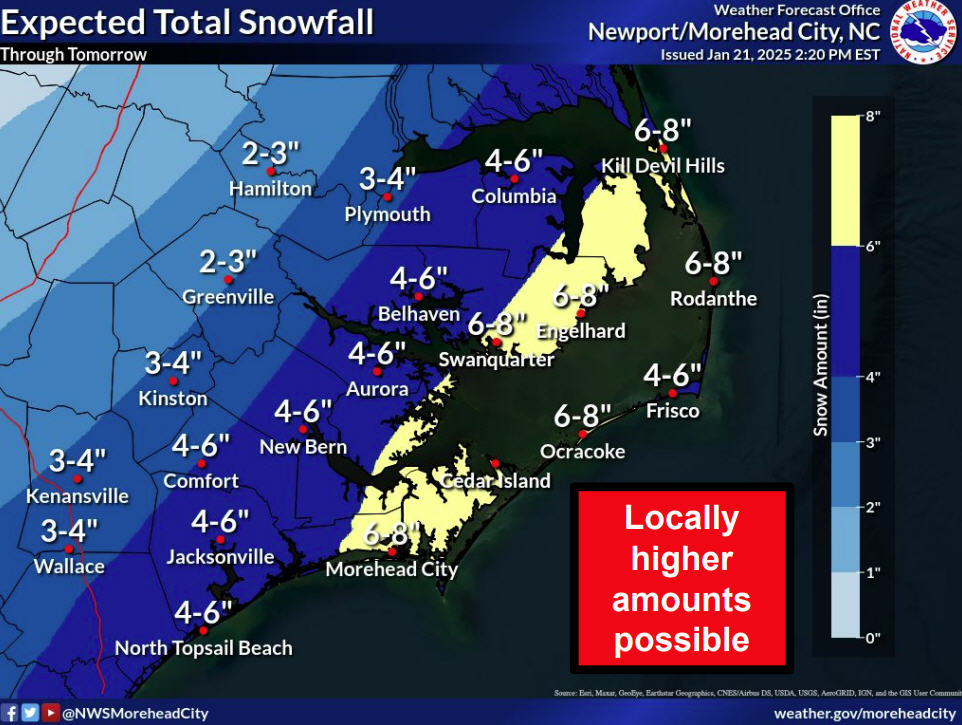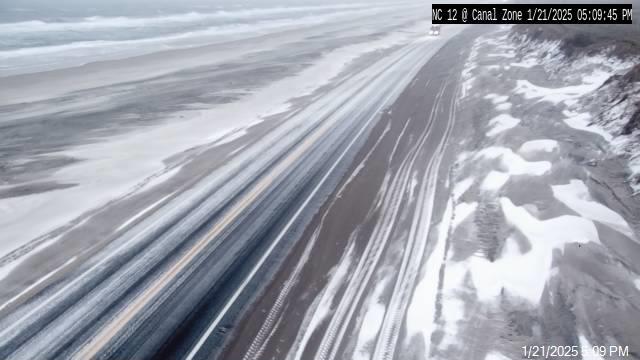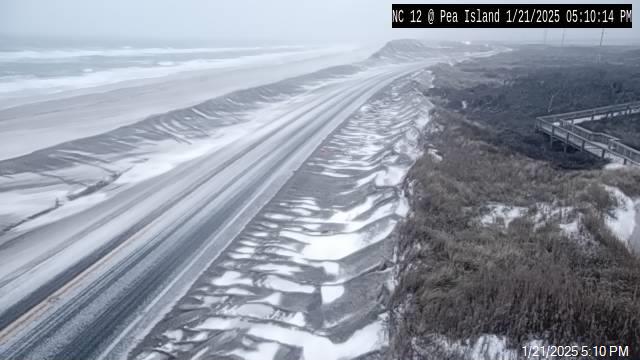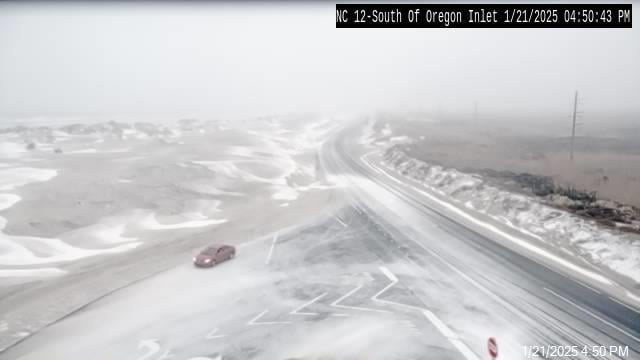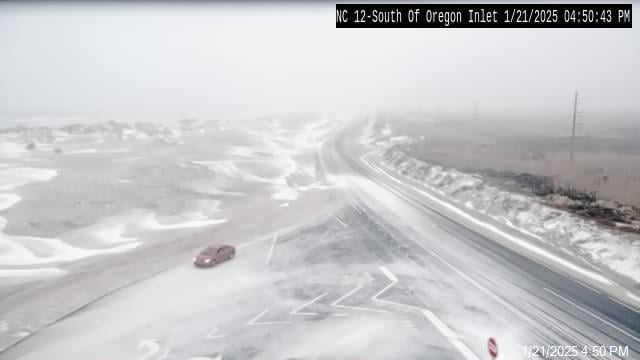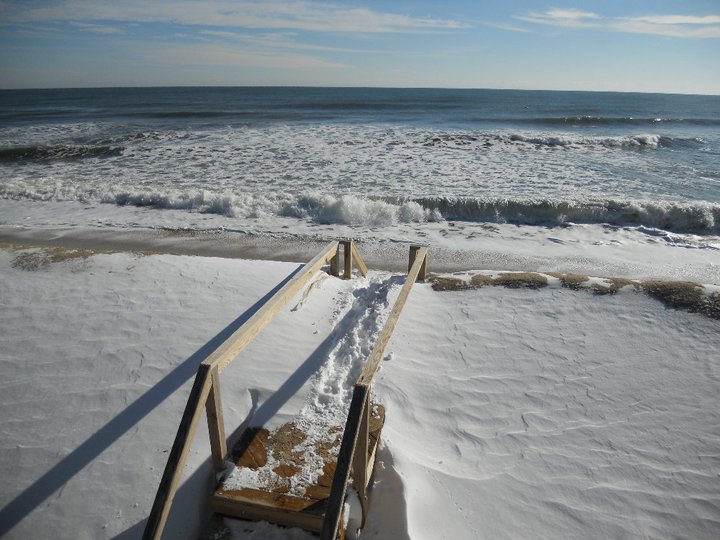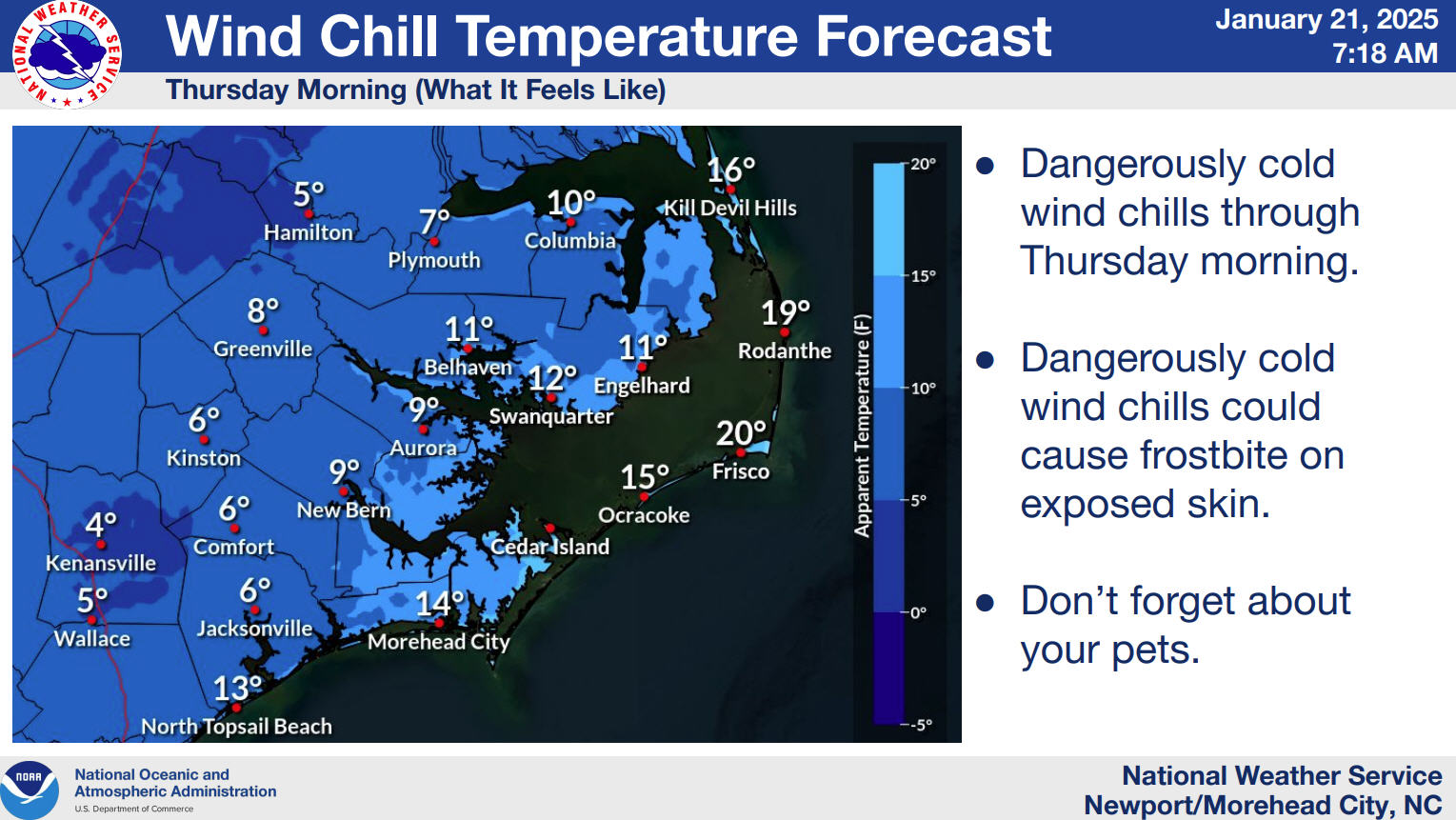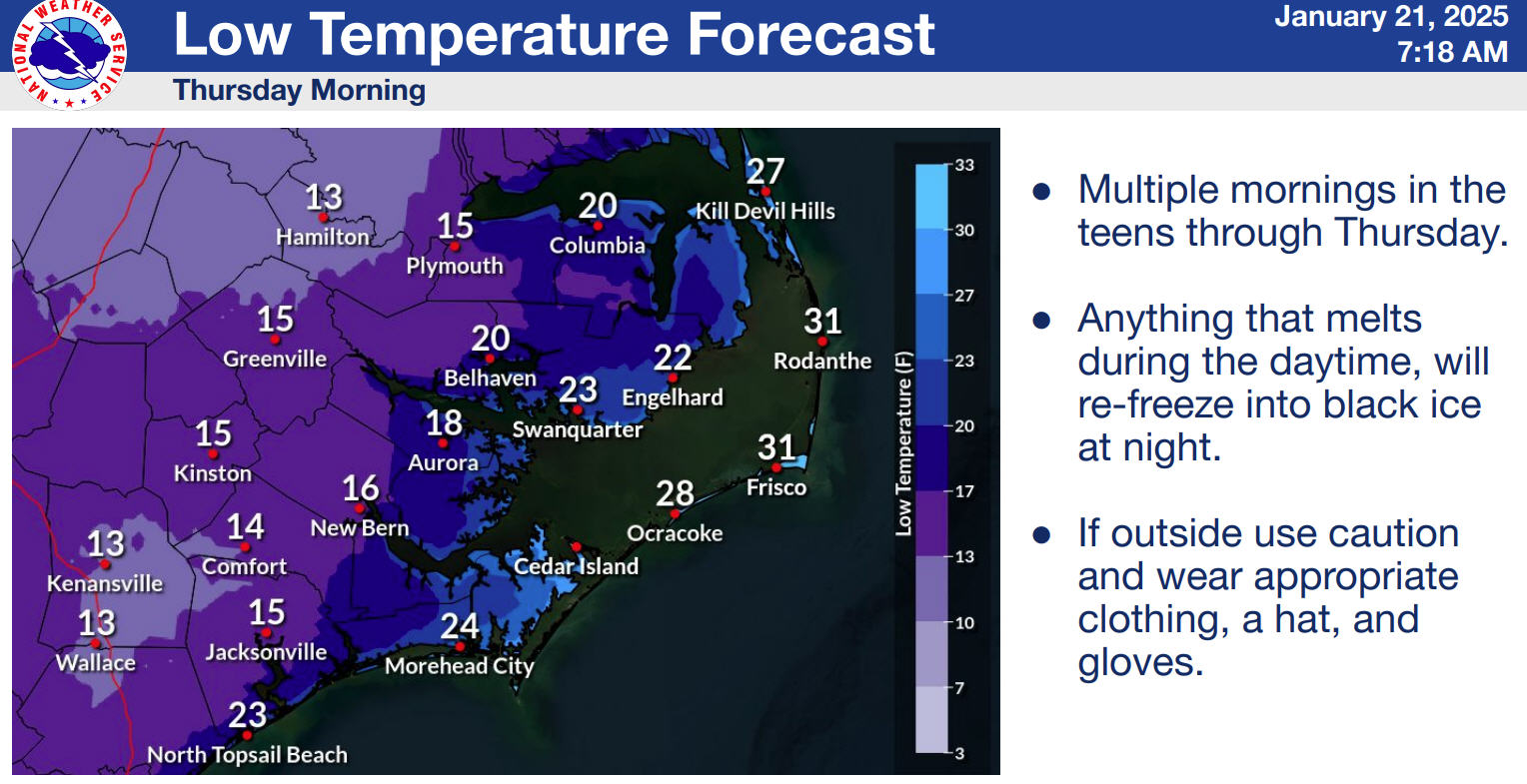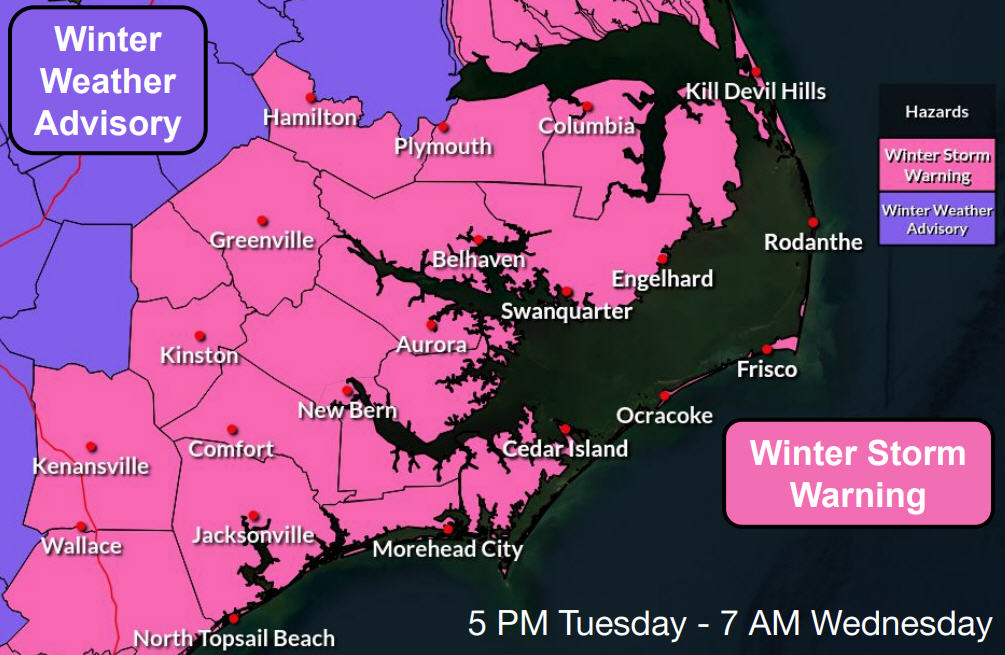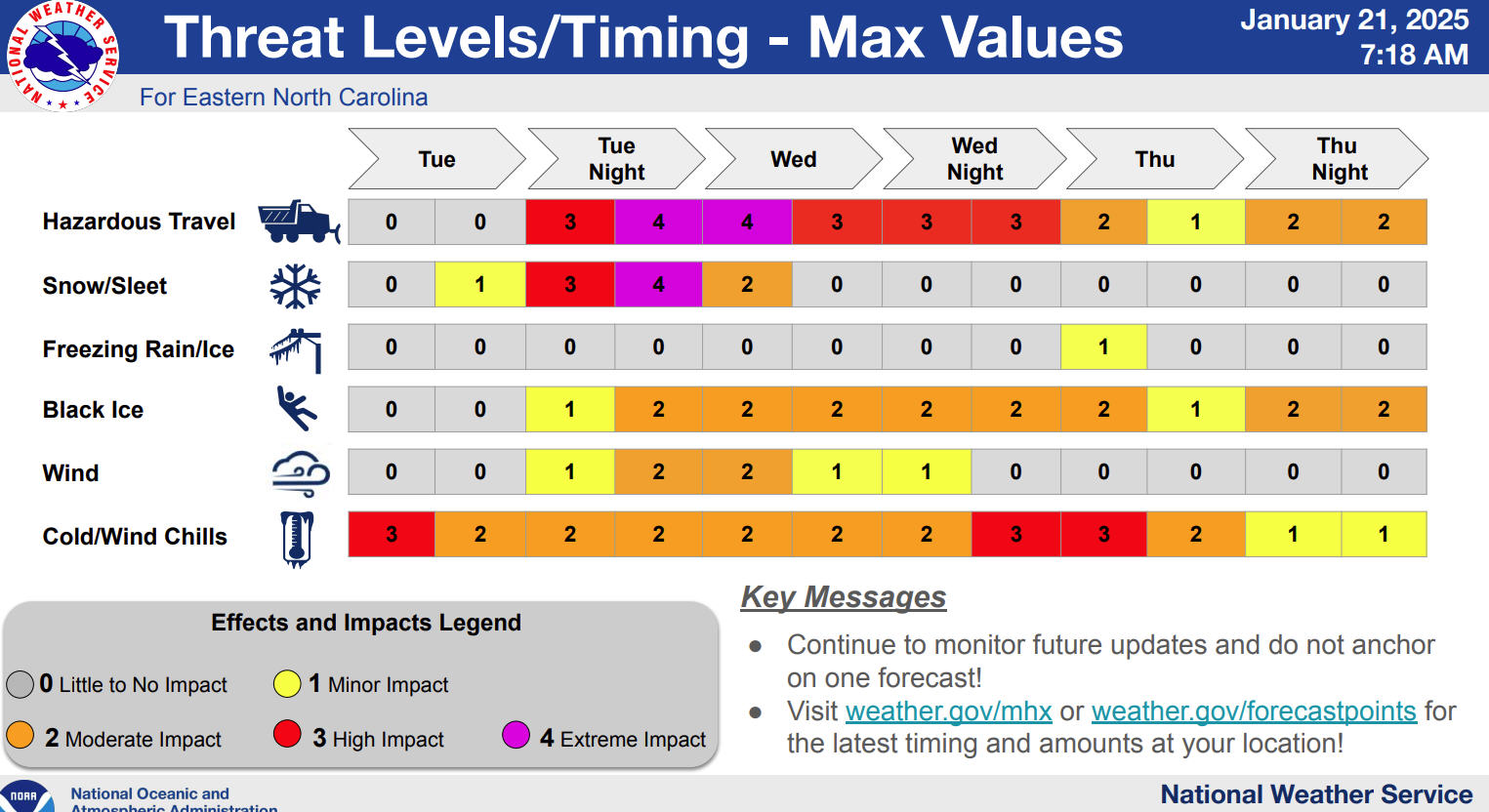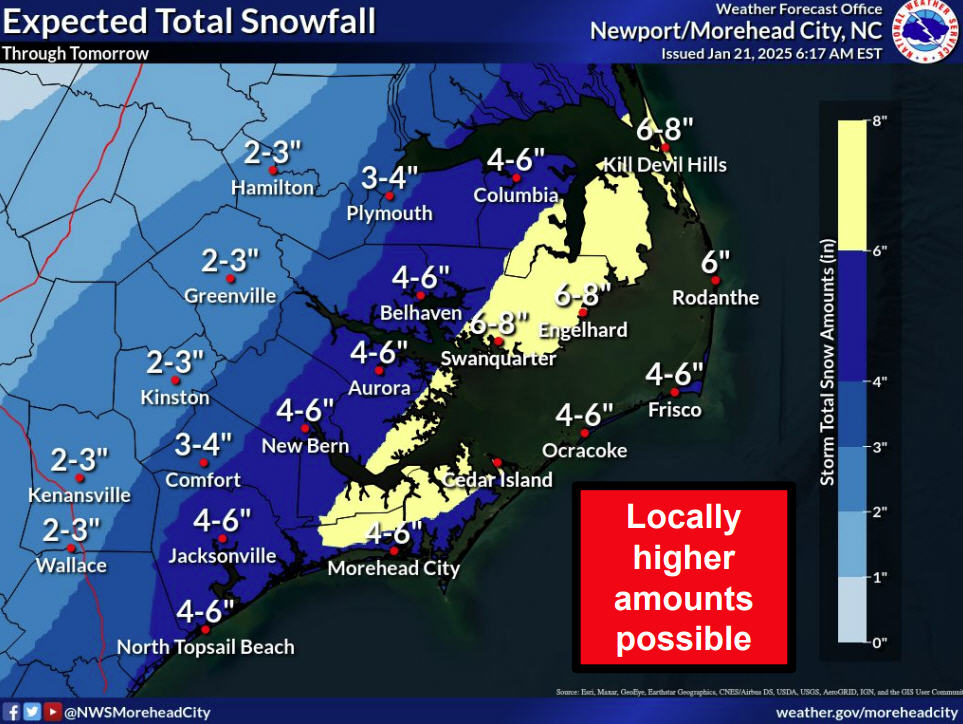Cape Point Enjoys an Unusual Weekend Visitor By JOY CRIST
On Saturday afternoon, local beachcombers along Cape Point reported seeing a newcomer to the scene – a resting seal that was enjoying the beach, (and presumably, not the shelling and the fishing.)
The seal made an appearance at around 4 p.m. on Saturday, but had disappeared by the end of the weekend. However, visitors who were lucky enough to be nearby and who had a great zoom lens were able to capture a couple photos before the unexpected visitor moved along.
There have been a number of seal sightings in the past week or so, with reports of seals popping up on the beaches from Hatteras village to Oregon Inlet.
The seals usually hit the beach in December, as the waters get cold enough for them to head all the way down to the North Carolina coastline. The recent northeaster and icy cold temperatures most likely contributed to this recent batch of seal sightings all across the Outer Banks.
It’s an annual visit that locals and wintertime visitors look forward to.
“We usually have dozens of seals on the seashore over the wintertime,” said David Hallac, Cape Hatteras National Seashore Superintendent. “In 2015 alone, more than 70 seals were reported on the Outer Banks, so it’s very common to observe seals [over the winter.]”
In 2017, the seals did not start arriving en masse until February, due to warmer air and water temps throughout the winter, but this year they appear to be right on schedule.
The seals head to the beach for a bit of a rest during their long swims along the coastline. Typically there are three types of seals who pay our islands a visit – harbor seals, which are the most common, gray seals, and occasionally harp seals.
Often, it’s the young seals that stop by, as they forage the southern waters for fish in order to avoid competition with the older adults in the Northeastern region of the U.S.
They’re certainly a fun sight for visitors, but beach-goers who come across a resting seal should keep a few things in mind:
Keep Your Distance. Seals are covered under the Marine Mammal Protection Act of 1972, which prohibits people from getting closer than 50 feet to the animals. Seals can also carry diseases – including a bad strand of the herpes virus and rabies – so if you get bit, there’s a good chance that you’re headed towards a costly and painful doctor’s visit.
Pause Before Calling the Authorities. Because seals aren’t typically seen on a remote beach, it can be easy to assume that since they’re out of the water and seemingly motionless, they may be in trouble. But this isn’t the case at all. Seals “beach themselves” simply because they need a rest, and like any weary vacationer, they look for the most deserted and unpopulated beaches to stretch out and take a break.
When in doubt, look for the “banana pose” – if a seal’s tail and head are up in the air, like a banana, that means he or she is happily relaxing and comfortable.
Keep it Chill. When seals land on Hatteras Island – like all vacationers and locals who need a break – they’re a little grumpy, and a little stressed, and they need a bit of “me time” to finally relax. So while it’s important to observe the 50-foot barrier, it’s also important to keep it quiet. Try to keep the noise – like engine revving and shouting– to a minimum. As any visitor or local who’s been next to a loud party on the sand will tell you, obnoxious beachgoers will cause you to leave your spot.
Simply put, keep your distance and follow the seal’s lead in staying relaxed, and a seal spotting will easily be a highlight of any wintertime beach trip. This time of year, the chances are fairly high that human visitors will be “surprised” by a fellow beach fan.





